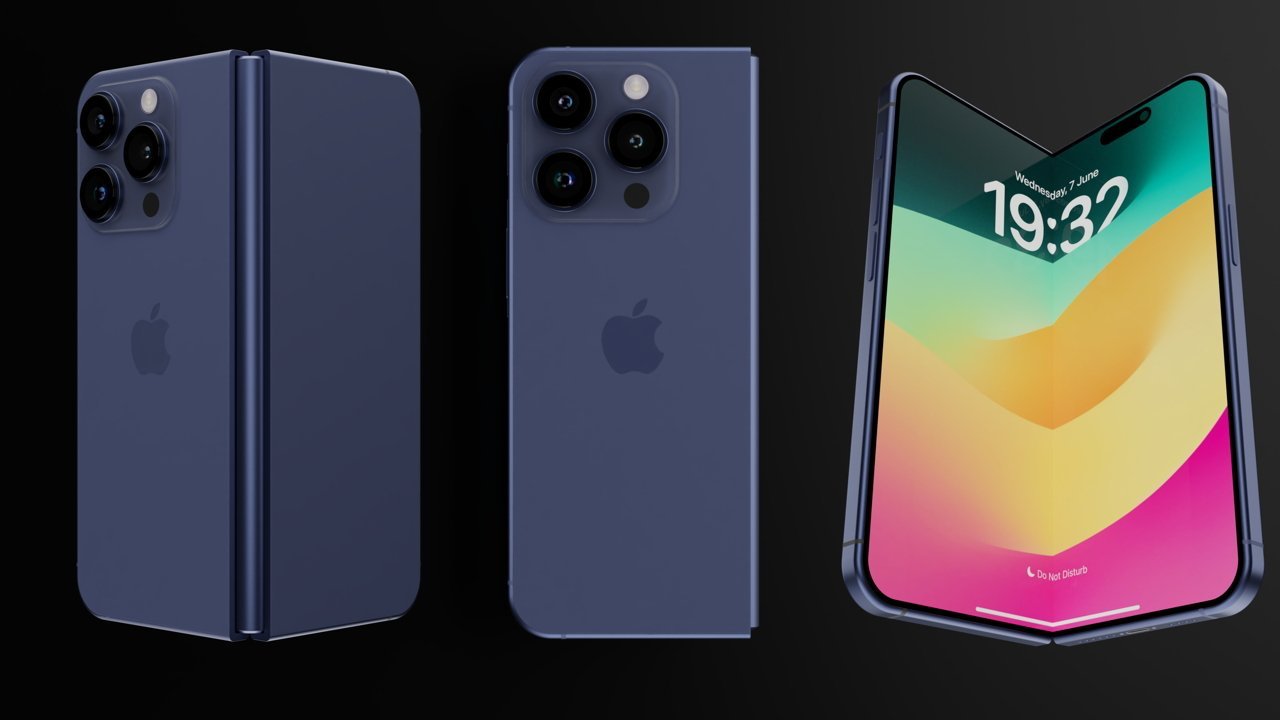iPhone fold report resurrects decade-old liquid metal component rumor
A rumor from long ago may finally come true, with liquid metal hinges and bearings predicted to be used in the iPhone Fold.

Renders of a possible iPhone fold
Foldable screens currently display a very visible crease after they have been used for a time, but it's previously been claimed that Apple has at least reduced this. Now Ming-Chi Kuo is backing that up with a report, seemingly based on his supply chain contacts, about one way Apple is achieving this.
"[In] order to improve the durability, screen flatness and crease-free screen of the foldable iPhone," writes Kuo on Twitter, "Apple will use liquid metal materials for key component bearings (hinge) and process them through die casting."
Screen creasing is caused by fatigue failure, similar to how an aluminum can tears when folded over and over. To keep that down in a glass substrate, a minimum bend radius must not be exceeded.
So, it's not clear why liquid metal hinges and bearings are required for a crease-free screen. Apple's goal for that is more about the hinge design, and the glass itself, rather than than the material used in said hinges.
Apple previously used similar materials in conjunction with California's Liquidmetal Technologies, but not for major components. In 2010, the company's alloy technology was used to make the SIM ejector tool for the iPhone and iPad, for example.
But that SIM ejector seems be about as far as Apple went with the technology.
While Kuo refers to this, he says that for the much larger and critical iPhone fold order, Apple is now working with Chinese firm Dongguan Yian Technology. The company is said to have the exclusive contract with Apple, and Kuo estimates that the iPhone fold alone will double the firm's annual revenues.
While Kuo says that the iPhone fold will be Apple's first use of liquid metal in the core components of a device, the company does have an extensive history of working with it. In 2015, it won a patent in conjunction with Liquidmetal Technologies for manufacturing products layer by layer, but the company didn't deploy this in mass manufacturing.
Nonetheless, Apple has definitely pursued the technology. In 2014, it applied for another patent regarding using liquid metal in molding systems.
Separately, it has been claimed that an iPhone fold may retail for more than the cost of a current Mac Studio.
Most recently, Kuo has vacillated between supply chain reports and guesswork predictions, and is rarely clear which is which. In this case, he does refer to a latest industry survey, however.
Read on AppleInsider

Comments
Assuming Kuo is right about what he's saying, and is accurate about who he thinks is involved, Liquid Metal as applied is a composite material with good hardness and resistance to fatigue failure. More plastic deformation, than, say, aluminum or steel.
I'm not sure why it would be newsworthy either seeing that liquid metal has been used on hinges in folding phones since 2019. It's also used on some premium smartwatches.
Perhaps it's more the type of liquid metal or the casting method. Phone hinges have used zirconium based Liquid Metal + MIM by, IIRC, DGYA Amorphous Alloy Technology Group.
b) prone to hinge damage
By its nature a folding iPhone would have to be significantly thinner, which likely means some loss of features or technology. Even if Apple could work around these issues and keep the cost reasonable, there's no evidence that folding smartphones are anything but a niche in the Android market as well, so the goal of developing a folding iPhone would be ... ?